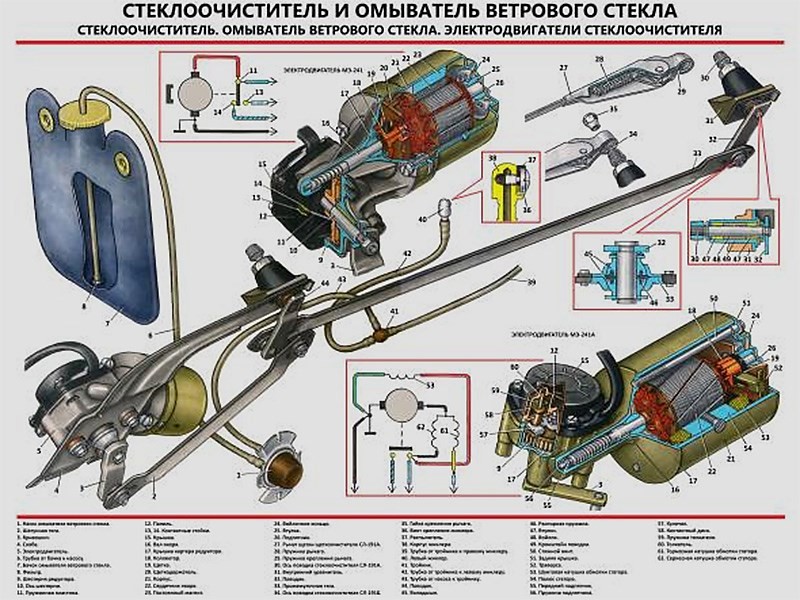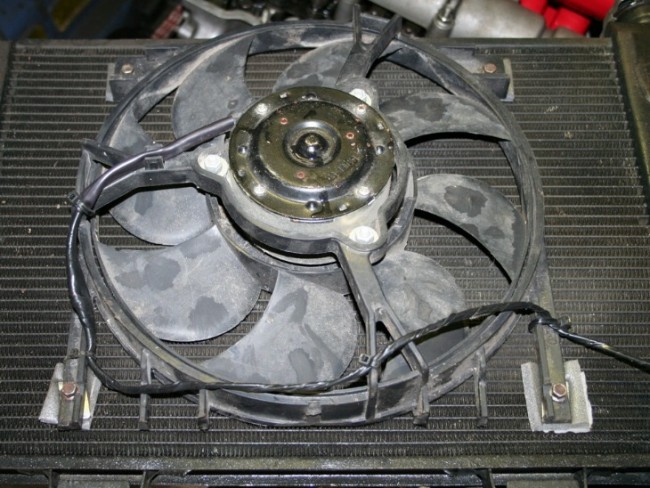
How to troubleshoot a car with clutch noise
Content
Clutch systems make noise if the clutch master cylinder, clutch pedal, pressure plate, clutch disc, flywheel or guide bearing are damaged.
People decide to buy a car with a manual transmission for a variety of reasons. For some, it's the pleasure or flexibility of driving a car with a clutch. However, clutch-controlled manual shift transmissions also face some hurdles to overcome, one of which is premature wear of various clutch components. In many cases, when the clutch begins to wear out, some moving parts make strange noises that are noticeable when the car is idling or in motion.
If you notice any sounds coming from the center of your car, this could be due to a broken clutch or wear on some individual components. In any case, trying to eliminate a noisy clutch can be difficult and time consuming. Below are a few common reasons why you might be hearing noises coming from the bell housing or clutch department, along with some of the best methods to fix these problems so that a professional mechanic can perform the repair.
Understanding Why Clutch Components Make Noise
While manual transmissions have changed considerably over the years, they are still basically made up of the same basic components. The clutch system starts with a flywheel, which is attached to the back of the engine and is driven by the speed at which the crankshaft rotates. The drive plate is then attached to the flywheel and supported by a pressure plate.
When the clutch pedal is released, the drive and pressure plates slowly “slide”, transferring power to the transmission gear and, ultimately, to the drive axles. The friction between the two plates is a lot like disc brakes. When you depress the clutch pedal, it engages the clutch and stops the transmission input shaft from rotating. This allows you to shift gears in a manual transmission to a higher or lower gear ratio. When you release the pedal, the clutch disengages and the gearbox is free to spin with the engine.
The clutch system consists of several separate components. Clutch operation requires working bearings that work together to engage and disengage (pedal release) the clutch system. There are also several bearings here, including a release bearing and a pilot bearing.
Some of the other parts that make up the clutch system and can make noise as they wear out include:
- Clutch master cylinder
- Clutch pedal
- Release and input bearings
- Clutch pressure plate
- Clutch discs
- Flywheel
- Guide bearing or sleeve
In most cases where the clutch shows signs of wear; one or more of the above components will break or wear prematurely. When these parts wear out, they tend to display several warning signs that can be used for troubleshooting. Below are a few troubleshooting steps to follow in order to determine what is causing the noise coming from the clutch system.
Method 1 of 3: Troubleshooting Release Bearing Issues
In a modern clutch, the release bearing is essentially the heart of the clutch pack. When the clutch pedal is depressed (that is, pressed to the floor), this component moves towards the flywheel; using the pressure plate release fingers. When the clutch pedal is released, the release bearing begins to separate from the flywheel and engages the clutch system to start putting pressure on the drive wheels.
Since this component always moves back and forth when you depress the clutch pedal, it makes sense to assume that if you hear noises when you depress or release the pedal, it is probably coming from this part. In order to troubleshoot the release bearing, you need to complete the following steps without actually removing the bell housing.
Step 1: Listen for a whining sound as you press the clutch pedal to the floor.. If you hear a howling or loud grinding sound coming from under the car when you press the clutch pedal to the floor, it could be caused by a damaged release bearing that needs to be replaced.
Step 2 Listen for sounds when you release the clutch pedal.. In some cases, the release bearing will make noise when the clutch is released. This is usually due to the center bearing rubbing against the flywheel as it travels towards the transmission.
If you notice this sound, have a professional mechanic inspect or replace the release bearing. When this component fails, the pilot bearing can also often be damaged.
Method 2 of 3: Troubleshooting the Pilot Bearing
For 4 wheel drive or rear wheel drive vehicles, a pilot bearing is used in conjunction with the vehicle's transmission to support and hold the transmission's input shaft straight when the clutch applies pressure. While this component may also be included in front-wheel drive vehicles, it is usually an RWD component that operates when the clutch is disengaged. When you let go of the clutch pedal, the pilot bearing allows the flywheel to maintain a smooth rpm while the input shaft slows down and eventually stops. This helps reduce stress on the rear of the engine. When a part starts to fail, some of the common symptoms will include:
- Control bearing will not release
- Transmission will jump out of gear
- Vibration may be noticed on the steering wheel
Because this component is vital to the overall operation of the clutch and transmission, if left unrepaired, it can lead to catastrophic failure. In most cases, when the pilot bearing starts to show signs of failure, a clang or high-pitched whine may be present. This also causes the input shaft to be misaligned, which can also create sound as the input shaft rotates.
To determine if this component is the source of clutch noise, follow these steps:
Step 1: Listen for sounds as the car accelerates after fully depressing the clutch pedal.. In most cases, when this part fails and causes noise, it is when the input shaft is rotating; or after the clutch pedal has been fully depressed or released.
If you hear a grinding sound or noise coming from the transmission when the vehicle is accelerating or decelerating when the clutch pedal is released, it may be from the pilot bearing.
Step 2. Try to feel the vibration of the steering wheel when accelerating.. Along with the noise, you may feel a slight vibration (similar to wheel imbalance) when accelerating the car and fully depressing the clutch pedal. This symptom can also be an indicator of other problems; so it's best to see a mechanic to professionally diagnose the problem if you notice.
Step 3: Rotten Egg Smell. If the clutch support bearing is worn and gets hot, it starts to emit a terrible smell, similar to the smell of rotten eggs. This is also common with catalytic converters, but you will notice this more often the first time you release the clutch pedal.
Any of the above troubleshooting steps can be performed by a beginner self-taught locksmith. In order to inspect the component for actual damage, you will have to completely remove the gearbox and clutch from the vehicle and inspect the damaged part.
Method 3 of 3: Troubleshooting Clutch and Disc Issues
The modern "clutch pack" on manual transmission cars, trucks, and SUVs includes several separate parts that work together to create friction, which in turn transfers power to the drive axles after the power is transferred to the transmission gears.
The first part of the clutch pack system is the flywheel attached to the rear of the engine. In an automatic transmission, the torque converter performs the same function as a manual clutch. However, its parts are a series of hydraulic lines and turbine rotors that create pressure.
The clutch disc is connected to the rear of the flywheel. The pressure plate is then fitted over the clutch disc and adjusted by the vehicle manufacturer so that a certain amount of force can be applied when the clutch pedal is released. The clutch pack is then fitted with a lightweight shroud or cover that prevents dust from burning clutch discs from spreading to other engine or transmission components.
Sometimes this clutch pack wears out and needs to be replaced. In most production cars, the clutch disc wears out first, followed by the pressure plate. If the clutch disc wears prematurely, it will also have several warning signs, which may include sounds, noises, and even bearing-like odors.
If you suspect the noise is coming from your clutch pack, perform the following tests to determine if this is the case.
Step 1: Listen to the engine RPM when you release the clutch pedal.. If the clutch disc is worn, it will create more friction than it should. This causes the engine speed to increase rather than decrease when the clutch pedal is depressed.
If the engine makes "weird" noises when you release the clutch pedal, the most likely source is a worn clutch disc or pressure plate, which should be replaced by a professional mechanic.
Step 2: Smell Excessive Clutch Dust. When the clutch disc or pressure plate is worn out, you will smell a strong smell of clutch dust coming from under your car. Clutch dust smells like brake dust, but has a very strong smell.
It's also very possible that you'll see an excessive amount of dust coming from the top of your motor, or something that looks like black smoke if the drive is damaged enough.
The parts that make up the clutch pack are wear parts and need to be replaced regularly. However, the replacement interval will depend on your driving style and habits. When replacing the clutch, it is also very often necessary to change the surface of the flywheel. This is a job that a professional mechanic must do, as adjusting and replacing a clutch requires special tools and skills that are often taught in technical school or ASE certification courses.
In most cases, when you notice a noise coming from the car when you release or depress the clutch pedal, it is a sign of damage to one of the many internal components that make up the clutch assembly and clutch system. It can also be caused by other mechanical problems with the transmission, such as worn transmission gears, low transmission fluid, or a hydraulic line failure.
Any time you notice this type of noise coming from under your car, it's a good idea to see a professional mechanic as soon as possible to fix the loud noise during a clutch test. The mechanic will check the operation of your clutch to check for noise and determine the correct course of action. A test drive may be required to reproduce the noise. Once the mechanic has determined the cause of the problem, the correct repair can be suggested, a price will be quoted, and service can be performed according to your schedule.
A damaged clutch is not only a nuisance, but can lead to additional engine and transmission component failures if not repaired as soon as possible. Although in most cases clutch noises are a sign of damaged or worn parts, finding and replacing these parts before they completely break can save you a lot of money, time and nerves. Contact a professional mechanic to complete this inspection, or have them restore the clutch to your vehicle.

